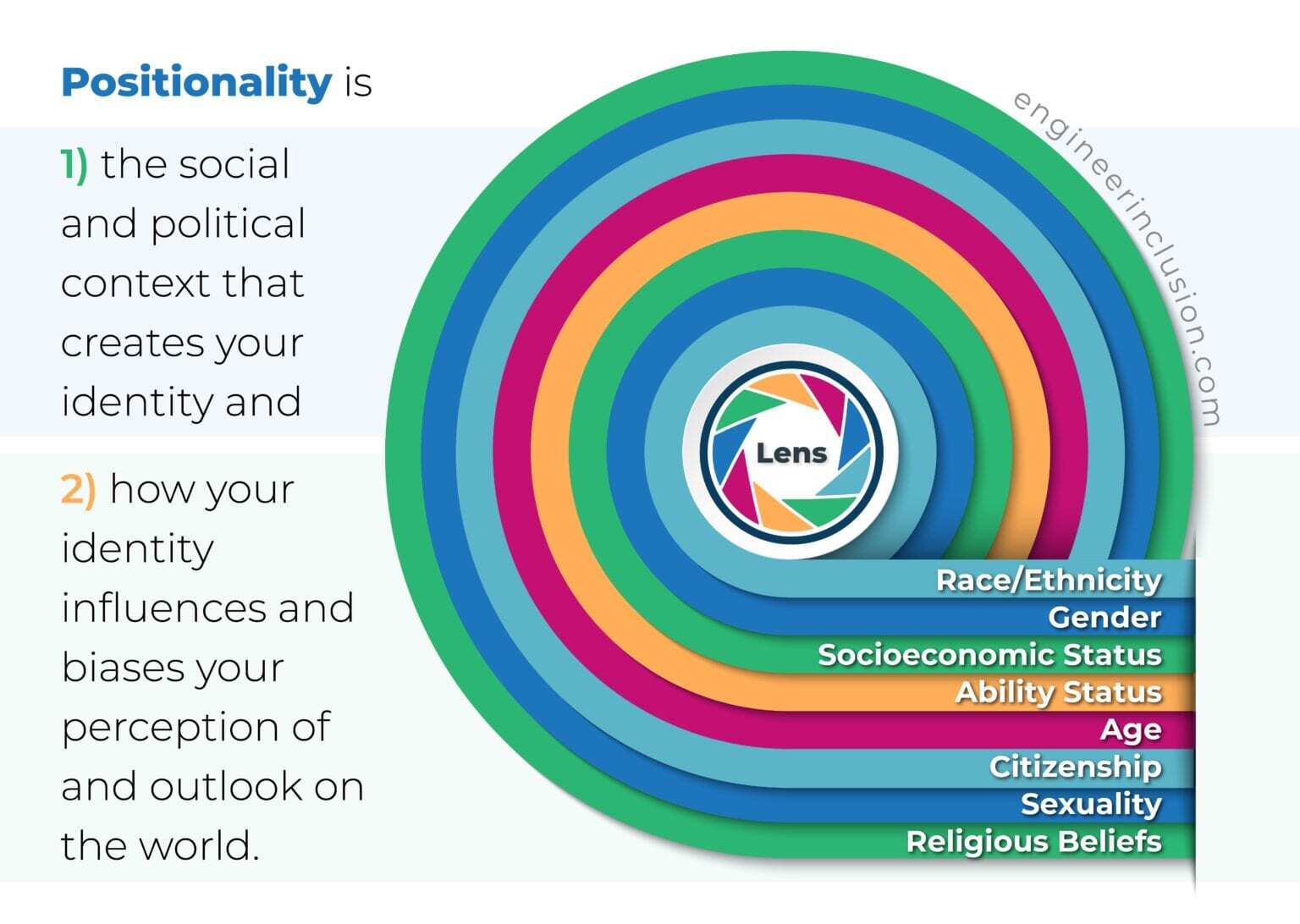Positionality Statement

Access Artefact Here
Course: INSDSG 607 - Using Primary Research for Evidence-Based Practice
Assignment Description: This assignment required students to identify a problem of practice and write a positionality statement identifying and describing their perspectives and biases concerning this problem of practice.
Competencies
| Theory into Practice | 1.1 Complete scholarly research including searching, locating, and analyzing literature in the field. 1.4 Critically assess reliable publications, literature, trends, theories, data, and tools used in the field of instructional design. |
| Analysis | 2.1 Seek multiple data and information points when conducting analysis. 2.3 Analyze performance gaps. 2.4 Identify causes of performance gaps. 2.5 Use analysis to recommend instructional and non-instructional solutions. |
| Design | 3.3 Design appropriate multimodal instructional delivery, including face-to-face, online, blended, and emerging modes. 3.6 Design effective formal and informal learning solutions. |
| Develop | 4.1 Evaluate the relevance and effectiveness of the instructional materials to help learners attain learning objectives. |
| Implement | 5.1 Develop implementation plans, taking into consideration social, organizational, and technical implications. |
| Evaluate | 6.1 Evaluate instructional materials for usability and effectiveness. 6.2 Use learner assessment data to improve instructional solutions. |
| Reflective Practice | 7.2 Act mindfully and advocate on behalf of the learner. 7.3 Distinguish process from content issues and determine how process can block or enhance group effectiveness. 7.4 Communicate clearly, collegially, and credibly in written and verbal discourse. 7.5 Engage respectfully, fairly, and cooperatively as part of a team. |
| Leadership | 8.1 Justify the need for specific educational and training programs. 8.2 Practice collaborative and teamwork strategies that build rapport and trust, mediate and resolve conflicts, and influence people. 8.4 Manage change initiatives in an effective and supportive way. 8.6 Provide leadership throughout different functions and levels of an organization. |
Introduction
This assignment was part of a course whose final objective was to do a literature review to gain an understanding of a topic or problem of interest and present that knowledge in the form of a written report. The positionality statement was intended to help students identify how our privilege, bias, beliefs, and other worldview components have shaped our position concerning the chosen topic.
I chose this artifact because of how eye-opening the process of learning and understanding what a positionality statement was, as well as discovering myself. The result of this assignment was not only to write the positionality statement but also, as stated by Pollock (2021), to increase my understanding of how my identity biases my perceptions and to be able to use that knowledge to become a better person who can extend greater empathy, compassion, and understanding to others (para.1).
Reflection
Writing the positionality statement was as interesting, revealing, and enriching as it was complicated. I started the assignment in complete ignorance of what a positionality statement was, so I went through a search and evaluation of articles, readings, videos, and examples (1.1, 1.4) to help me understand the concept. When I think about it now after completing the course, making a positionality statement should be simple because, in a way, it is an evaluation of the person I have been with since I was born: myself. However, getting out of my perspective to analyze myself objectively takes much work. In the end, we are very complex beings whom many experiences have shaped us since we were children, and many times we cannot identify exactly what has led us to be the way we are.
While writing this statement, an extremely revealing moment (AHA moment) was when I understood the concept of privilege. According to Pollock (2021), in her blog titled, What is positionality?:
It is impossible to reflect on positionality by considering privilege. It gives advantages, favors, and benefits to members of dominant groups at the expense of target groups. Privilege is characteristically invisible to people who have it. People in dominant groups may believe that they have earned the privileges they enjoy or that everyone could access these privileges if only they worked to achieve them. (para. 4)
Suddenly that part that says "privilege is invisible to people who have it" made all the sense in the world. I had always thought of privilege by race or class. However, suddenly I understood that privilege is circumstantial, that sometimes I am in the privileged group and sometimes at a disadvantage.
In the positionality statement, I analyzed how my reality shaped my views on the learning process experienced by people with physical or learning disabilities or those who are not proficient in the language of instruction. Analyzing myself in relation to that topic and writing the assignment led me to think about the value of having a positionality statement that considers how we approach the instructional design process.
In order to design a learning experience that is truly inclusive, accessible, and universal, I must first be able to explore my context in depth and identify the privileges, beliefs, and biases that could affect my approach to the instructional design process and put certain groups at a disadvantage. Creating this artifact has made me more aware of the considerations I should have at each stage of the instructional design process. Reflecting on my positionality has led me to put myself in the learner's place. Currently, in my work, among my goals and responsibilities is to promote the creation of learning events that take into account the less privileged (7.2) to evaluate the obstacles that the organization itself may unconsciously place, and to develop accessible and inclusive learning tools and processes (7.3, 7.4, 7.5, 8.1, 8.2, 8.4, 8.6).
Application
Reflecting on positionality at the beginning of each stage of the instructional design may be a valuable practice to understand how our biases may affect our interpretations and decisions during the process. We can ask ourselves during the analysis, am I considering all relevant factors when conducting my analysis? (2.1) Are my privileges getting in the way of an objective analysis that considers all factors that may affect a learner's performance? (2.2, 2.3). Being aware of our biases is key to making a complete and objective analysis and therefore being able to recommend truly effective solutions (2.5).
In the same way, during the design phase, if we are aware of our preferences, we can identify if the modes and solutions we are designing (3.3, 3.6) are the most appropriate according to the learner's particular needs and not to our inclination. In the development process, we can evaluate the relevance and effectiveness of the materials (4.1) by considering other realities that may not be so obvious but impact whether a learner can achieve the learning objectives. During implementation, we can go beyond the obvious and consider unfamiliar needs during the incorporation of the implementation plans (5.3).
Finally, identifying what we understand by usability and effectiveness and recognizing that for others, it may be different can help us to evaluate instructional materials more objectively by considering their accessibility from other perspectives (6.1). Similarly, being open to other realities can help us analyze assessment data more comprehensively (6.2) and improve instructional solutions more effectively.
